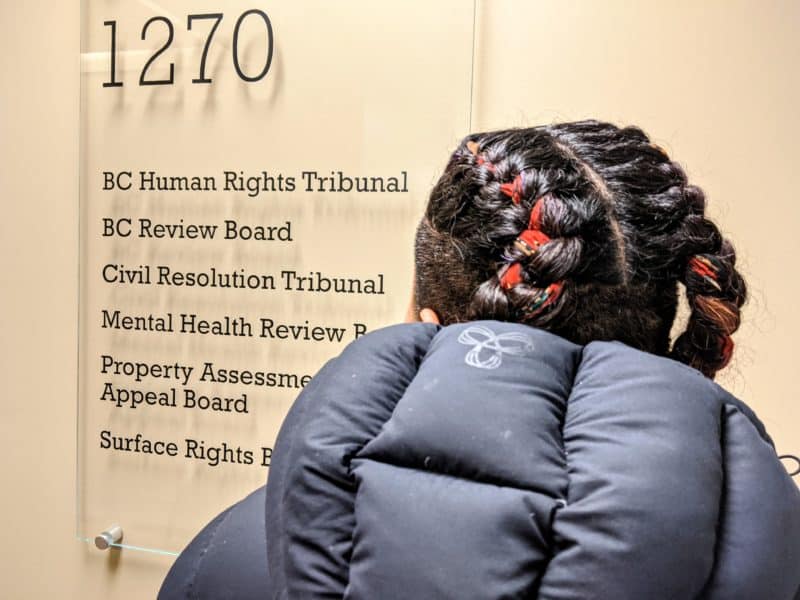
This is from our urban Indigenous newsletter. Make sure to share it and subscribe here.
At The Discourse, we don’t just write about reconciliation — we practice it in our newsroom. To that end, I’d like to introduce Brielle Morgan, a reporter who will be covering B.C.’s Lower Mainland urban Indigenous community with me.
Though not Indigenous herself, Brielle is no stranger to issues impacting Indigenous people. She’s written about the child-welfare system for The Discourse for more than two years, a system where Indigenous peoples are seriously overrepresented.
Her work has been deeply rooted in listening to people — youth, families, social workers, lawyers, leaders and advocates — to learn as much as she can about how people are impacted by B.C.’s child welfare system. Bringing Brielle on board is part of The Discourse’s shift to focus on in-depth journalism in communities underserved by the media. In our case, this means the Lower Mainland urban Indigenous community.
I look forward to Brielle collaborating with me. I’ve watched her report on a tough beat with doggedness, sensitivity and a keen ability to explain in simple terms the complex issues that Indigenous families, service providers and the law have to navigate.
Although Brielle is white, I see this as an opportunity for exercising reconciliation. While I believe there needs to be more representation by Indigenous people in newsrooms, I’m also an advocate of non-Indigenous journalists telling Indigenous stories. Why? Because what are non-Indigenous journalists and editors learning about reconciliation, Indigenous communities and Indigenous people if they aren’t reporting on those stories, too?
What you love

Chris Trottier didn’t grow up with his father in his life. It was only once they reconnected, when Chris was in his 30s, that he started learning about his Metis identity — and unlearning all the things he was taught about Indigenous peoples through media representations.
“Once I unlearn things then I can take the time to actually learn. So that’s the process that I’ve been going through when it comes to understanding identity.”
Chris, a social media consultant, appreciates how open and generous people have been with him, as he works to understand more about who he is and where he comes from.
“I love the fact you’re able to get together with people and hear their experiences, hear where they’re coming from,” he says. “I was just shocked at how people are willing to, for somebody who didn’t grow up with the culture, how accepting people have been, and how willing they’ve been to let me kind of look into their world. It’s really amazing.”
People are talking about
- An Indigenous mother from Burnaby is taking has filed a complaint against her landlord with the BC Human Rights Tribunal because she says he evicted her for smoking dope when in fact she was smudging with sage.
- In this The Tyee story, reporter Carlos Oen documents how Indigenous people had their own sign language, and how it formed the basis of modern American Sign language. First of two parts.
- A white participant in APTN’s three-part First Contact series talks about how her experience visiting reserves across Canada impacted her.
- More reporting has been happening on Ian Campbell pulling out of the municipal election. It’s being reported that he did not disclose a 2010 assault charge to Vision Vancouver campaign officials (it’s not clear if this informed his decision to withdraw).
Culture connections

Place matters for Indigenous people, says Chief Leanne Joe Sxwpilemat. She says she always introduces herself as “Chief Leanne Joe Sxwpilemat of the Squamish Nation
“It’s to show that respect, that lineage, that kinship tie,” she says. “Because a lot of how we identify ourselves, is by place.”
“I am Squamish,” she adds. “That’s where my membership is with. That’s on my father’s side.”
Chief Leanne also identifies as belonging, through various family members, to the Tsleil-Waututh Nation, the Kwakwaka’wakw — the Kwak’wala-speaking people on the East Coast of Vancouver Island — the Upper Nicola Band and various bands throughout the Okanagan.
“When I introduce myself, when I [tell] you which families and communities I came from, it’s because it’s attached to place and to language and to this specific culture of those communities.”
For Chief Leanne, there’s strength in knowing where you came from, and power in communicating that to others. “I want the greater society to be able to see we’re here because of cultural resiliency, because of our ability to survive and thrive, despite all of that history.”
Let’s gather
-
Sept. 23-26: The Museum of Vancouver is hosting the Weaving Cultural Identities exhibition, “a visual manifest of local dialogues surrounding the reconciliation of lost heritage, and the sharing and celebration of cultural knowledge, symbolism and self-identification through textile traditions.”
-
Sept. 22-23: On Saturdays and Sundays, from 10 a.m. to 2 p.m., Lauraleigh Paul Yuxweluputun’aat is serving up traditional foods at the BigHeart Bannock Cultural Cafe — operating out of Skwachàys Lodge Aboriginal Hotel and Gallery.
-
Sept. 25: Celebrate Reconciliation in Action at Britannia Community Services Centre from 3-6 p.m. Organizers say the event will feature games and activities, food and prizes, an art marketplace, and live performances.
-
Sept. 27: Eat and learn at the Salmon & Bannock reconciliation workshop where the goal is to “explore responsible allyship with Indigenous peoples and bear witness to personal stories that share how to effectively become allies with Indigenous peoples.”
If you know about an event that you think should be included in this newsletter next week, send us an email. [end]



